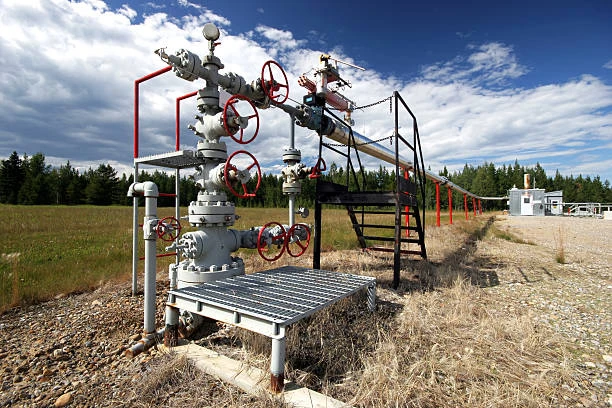In the world of automotive engineering, valve springs play a critical role in the performance and reliability of an engine. Modern valve technology has significantly evolved, enhancing efficiency and durability. This article explores the importance of stress testing modern valve springs, the methodologies involved, and the impact of these tests on engine performance.
Understanding Modern Valve Springs
What Are Valve Springs?
Valve springs are crucial components in an internal combustion engine, responsible for closing the engine’s valves after they have been opened by the camshaft. This closure is essential for maintaining the engine’s timing and ensuring optimal performance. Modern valve springs are designed to withstand the high pressures and temperatures found in today’s engines.
The Evolution of Valve Springs
Historically, valve springs were simple coils of metal, but advances in materials and design have led to the creation of modern valve springs that can handle higher RPMs and stresses. Innovations such as dual springs, lightweight materials, and variable spring rates have emerged to meet the demands of high-performance engines.

The Importance of Stress Testing
Why Stress Testing is Crucial
Stress testing is vital for ensuring that valve springs can perform reliably under extreme conditions. The testing process assesses the mechanical properties of the springs, including fatigue resistance, tensile strength, and overall durability. By identifying potential failures before they occur in real-world applications, manufacturers can improve their products and enhance engine performance.
Key Benefits of Stress Testing
- Enhanced Reliability: Stress testing identifies weak points in valve springs, allowing engineers to reinforce those areas.
- Performance Optimization: Testing helps in refining the design and material selection for better performance.
- Increased Lifespan: Regular testing can lead to longer-lasting components, reducing the frequency of replacements.
Methods of Stress Testing Modern Valve Springs
1. Static Testing
Static testing involves applying a load to the valve spring to measure its resistance and deformation. This method helps determine the spring’s spring rate and ensures it meets design specifications.
2. Dynamic Testing
Dynamic testing simulates real-world operating conditions by rapidly cycling the valve springs through their full range of motion. This testing is crucial for understanding how springs perform under actual engine conditions, including high RPM scenarios.
3. Fatigue Testing
Fatigue testing involves subjecting valve springs to repeated cycles of stress to evaluate how they perform over time. This method helps identify the lifespan of the spring and any potential failure points.
4. Environmental Testing
Environmental testing examines how valve springs react to various conditions, such as extreme temperatures and corrosive environments. This testing is essential for modern engines that may operate under diverse conditions.
Analyzing the Results
Interpreting Stress Test Data
The data gathered from stress testing can reveal a wealth of information about valve spring performance. Engineers analyze this data to understand how different materials and designs affect the spring’s behavior under load.
Making Design Improvements
Based on stress test results, manufacturers can make informed decisions about design modifications. This iterative process leads to the development of springs that are not only stronger but also more efficient.
The Role of Materials in Valve Spring Performance
Advancements in Materials
Modern valve springs are often made from high-strength alloys and specialized materials designed to withstand extreme conditions. Common materials include:
- Chrome Silicon Steel: Offers high fatigue resistance and is commonly used in performance applications.
- Inconel: A nickel-chromium alloy known for its exceptional strength and ability to withstand high temperatures.
Material Testing
Testing different materials is essential for optimizing valve spring performance. Each material has unique properties that can significantly impact the spring’s behavior under stress.
The Impact on Engine Performance
Correlation Between Valve Springs and Engine Efficiency
The performance of valve springs directly affects engine efficiency. Well-designed springs ensure that valves open and close at the optimal times, improving combustion efficiency and power output.
Performance Tuning
Engine builders often customize valve springs to match specific engine configurations. By selecting the right springs, they can fine-tune the engine for better performance, whether it’s for racing, off-roading, or daily driving.
Conclusion
Stress testing modern valve springs is a critical process that ensures reliability, performance, and longevity in automotive applications. With advances in materials and testing methodologies, manufacturers can produce valve springs that meet the demands of high-performance engines. As automotive technology continues to evolve, the importance of robust testing practices will remain a cornerstone of engineering excellence.
FAQs
1. What is the purpose of a valve spring in an engine?
Valve springs ensure that the engine’s valves close properly after being opened, maintaining optimal timing and performance.
2. How do modern valve springs differ from traditional ones?
Modern valve springs are often designed with advanced materials and technologies, allowing them to withstand higher RPMs and stresses compared to traditional springs.
3. What are the common methods of testing valve springs?
Common testing methods include static testing, dynamic testing, fatigue testing, and environmental testing.
4. Why is fatigue testing important for valve springs?
Fatigue testing helps determine the lifespan of valve springs by simulating repeated stress cycles, identifying potential failure points.
5. How can I tell if my valve springs need to be replaced?
Signs that valve springs may need replacement include engine misfires, loss of power, or unusual noises coming from the engine. Regular inspections can also help identify wear.

















